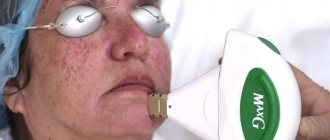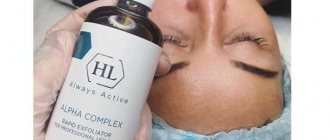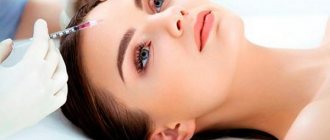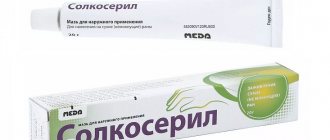This information will help you learn what phototherapy is and what to expect before, during, and after the procedure.
The goal of phototherapy is to reduce the growth of skin cells and treat associated inflammation in the skin. Phototherapy, also known as phototherapy, achieves this goal by exposing the skin to ultraviolet (UV) light.
Phototherapy may be used to treat some skin conditions, including the following:
- psoriasis (raised red, scaly patches on the skin);
- vitiligo (lack of pigment in certain areas of the skin);
- eczema (a condition in which the skin becomes red and itchy);
- lichen planus (small bumps on the skin);
- cutaneous T-cell lymphoma (a type of lymphoma that appears as plaques or scaly patches of skin);
- itchy skin.
to come back to the beginning
What is phototherapy
Phototherapy or light therapy, phototherapy involves exposing the skin to ultraviolet rays on a regular basis and under the supervision of a physician.
The procedures are carried out in medical institutions or at home using special equipment. With phototherapy, the main thing is the sequence of treatment. The essence of the procedure is that the patient is exposed to sunlight or bright light of various wavelengths from artificial sources such as fluorescent or dichroic lamps, light-emitting diodes, lasers. The effectiveness of the procedure is clinically proven.
Phototherapy equipment uses special lamps with the following radiation:
- ultraviolet radiation (180-400nm) - infrared radiation (650-2000nm) - visible radiation (400-760nm)
Light spectrum: red, orange, yellow, green, blue, indigo, violet.
Each type of radiation has specific indications for use and methods of exposure.
Radiation in the wavelength range from 380 to 760 nm
Phototherapy planning
Phototherapy is performed in a dermatologist's (skin doctor's) office, but if you are prescribed long-term therapy, talk to your doctor about the possibility of at-home sessions.
Phototherapy in a dermatologist's office
This procedure is not currently performed at Memorial Sloan Kettering (MSK). To undergo phototherapy in a doctor's office, you will need to see a local dermatologist who performs the procedure in his or her office.
We can recommend a dermatologist for you, but if this office does not accept your insurance, one can be found at: www.psoriasis.org/health-care-providers/physicians-directory or www.aad.org/for-the- public. Your healthcare provider can also give you a list of dermatologists at www.aad.org who provide phototherapy in their office.
Your dermatologist will explain to you what to do and how long the phototherapy treatment will take.
Tell your MSK dermatologist about your local dermatologist by sending a message through the portal or calling the office.
Phototherapy at home
To perform phototherapy at home, you will need a home phototherapy machine. Your doctor will send a request to the company, which will then send you such a device and instructions for its use.
Information about home phototherapy devices and the companies that supply them can be found at: www.psoriasis.org/about-psoriasis/treatments/phototherapy/uvb/home-equipment.
Depending on the type of home phototherapy machine you use, you will need:
- fill out a patient order form for phototherapy at home, as well as other necessary documents (these will be issued by your doctor who prescribed phototherapy);
- have a doctor's prescription indicating the type of therapy and dose.
You will receive approximately _____ phototherapy sessions at home over the course of _____ weeks
to come back to the beginning
There are two types of phototherapy:
— Broadband phototherapy. Emits a wide beam of light. Not suitable for use on hard-to-reach areas of the skin.
— Narrowband phototherapy. Emits a narrow beam of light. Makes it possible to penetrate hard-to-reach places on the body. For example, where there are skin folds.
Broadband phototherapy
Narrowband phototherapy
When talking about phototherapy, one cannot fail to mention heliotherapy. The term means sun treatment. Direct rays of the sun are used to harden the body, treat skin diseases, and extrapulmonary forms of tuberculosis.
Nowadays, visiting a solarium to get a beautiful tan has become very popular. But a solarium cannot be classified as a phototherapy procedure. Such artificial sunbathing increases the risk of melanoma by 59% and does not provide the necessary type of light. The difference is that phototherapy equipment uses UVA radiation, which is safer for the skin and has a positive effect, while beauty salons use UVB radiation for tanning, which is less safe and has a detrimental effect on human skin.
Phototherapy procedures must be prescribed by a doctor and carried out under the supervision of a specialist.
After phototherapy procedure
- After a phototherapy session, you may experience redness, itching, or a burning sensation. These are all common side effects of this therapy.
- Phototherapy can cause dry skin. Apply a fragrance-free moisturizer such as Aquaphor® or Cetaphil® at least once a day.
- It may take 6-8 sessions for your skin to begin to improve. In some cases, improvement may become visible only after 2 months.
Follow-up
- In the future, you may need to see your dermatologist who treats your skin condition, an ophthalmologist, and a doctor at MSK.
- Ask your doctors when you should come for your appointments.
to come back to the beginning
Indications for phototherapy
Phototherapy for newborns
- Phototherapy is used to treat skin diseases such as psoriasis, acne, neurodermatitis, eczema, and neonatal jaundice. Treatment of jaundice in newborns is carried out with phototherapy lamps during various resuscitation measures, for the care of newborns in maternity hospitals and intensive care wards.
- The procedure promotes the healing of trophic ulcers and wounds.
- The procedure is widely used in the beauty industry. Used for photoepilation, skin rejuvenation, removal of wrinkles, age spots, and correction of vascular skin defects. Tattoos are removed using special phototherapy lamps.
- In addition, the procedure affects the retina and can be used to treat depression, sleep disorders and mental disorders.
- Light therapy is recommended as a means of restoring the body's routine when changing time zones.
- According to the American Cancer Society, there is evidence that phototherapy has beneficial effects in the treatment of skin cancer.
Contraindications
Phototherapy is a medical procedure that has a serious effect on the patient, so this method of treatment is not suitable for everyone. Contraindications are:
- oncological diseases;
- tuberculosis;
- period of exacerbation of chronic pathologies;
- high photosensitivity of the skin, photodermatosis;
- connective tissue diseases;
- eye diseases that increase their sensitivity to light;
- some mental disorders;
- diabetes;
- skin tendency to form scars;
- pacemaker;
- blood clotting disorders;
- severe damage to the skin in the intended area of influence;
- the period of bearing and breastfeeding a child.
Phototherapy sessions should not be performed if the patient is taking medications or certain herbal remedies that can cause photosensitivity.
It is not recommended to use this method of treatment if the patient has certain diseases of the blood system or endocrine pathologies. In such cases, you should consult your doctor before using phototherapy.
What to consider before starting procedures
- Price. The procedure is very expensive. It is necessary to correctly calculate the funds and take into account that the procedure consists of several sessions over a certain period of time. Consistency and regularity are of great importance.
- Time. In order for the treatment to be effective, 2-3 procedures per week are required for 2-3 months. You need to calculate whether you will have time for this.
- Risks. There is a risk of burns and skin aging. The risk of developing skin cancer increases with long-term use of phototherapy. It is necessary that the eyes are protected during each session, since ultraviolet radiation has a detrimental effect on the retina of the eyes.
Before the phototherapy procedure
Your doctor will determine whether phototherapy is safe for you. To do this, the doctor:
- will examine the skin all over your body and also ask about your reaction to sunlight;
- will ask if you or someone you know has had skin cancer or photosensitivity (a disorder in which the skin becomes more sensitive to sunlight);
- will ask if you are pregnant or breastfeeding.
Tell your doctor what medications you take, including patches, creams, herbal supplements, and over-the-counter medications (that is, medications you get without a prescription). Some medications, such as retinoids (including tretinoin), certain antibiotics, anti-cancer drugs, and other drugs, can make your skin more sensitive to UV radiation.
If you are prescribed PUVA radiation therapy, you will need to see an ophthalmologist (eye doctor) for a vision test before you start.
to come back to the beginning
Causes of skin pigmentation
Vascular pathology is a cosmetic defect that can occur in people of different ages and gender.
Increased skin pigmentation can result from the following manifestations:
- increased sensitivity to ultraviolet exposure;
- hormonal changes;
- pregnancy and lactation;
- advanced age;
- injuries, bruises;
- self-squeezing out acne;
- past infections;
- surgical intervention;
- abuse of aggressive procedures;
- radioactive radiation;
- dermatological diseases;
- use of low-quality cosmetics.
To eliminate pigmentation of the skin of the face and body, the disease that provokes it should be identified and treated. In addition, any pigmentation intensifies under the influence of ultraviolet radiation; accordingly, you should limit your exposure to the sun (including avoiding solariums).
1 Phototherapy
2 Phototherapy
3 Phototherapy
Benefits of Phototherapy
Unlike other similar procedures, phototherapy helps reduce itching (skin diseases cause severe itching and burning, which bring discomfort to the patient), eliminate the inflammatory process, fill the human body with vitamin D, and provide high skin resistance to the proliferation of various pathogenic microorganisms.
Very often, specialists prescribe such treatment to avoid more serious ones, for example, taking methotrexate and cyclosporine.
Phototherapy for psoriasis
Psoriasis is one of the most common chronic dermatoses. According to various authors, psoriasis affects from 3 to 7% of the world's population. Recently, psoriasis is increasingly being talked about as a systemic disease, calling it “psoriatic disease” due to the involvement in the process of not only the skin, but also the joints, kidneys, and liver. Despite the large number of studies devoted to the study of psoriasis, the cause of the disease is not fully understood. Currently, “this mysterious disease” is considered as a disease of a multifactorial nature involving genetic, immune and environmental factors.
Being a genetically determined disease, psoriasis is characterized by hyperproliferation of epidermal cells, impaired differentiation of keratinocytes, impaired functioning of the immune system, accompanied by the formation of immune-dependent cytokines and mediators that induce an inflammatory reaction in the dermis. One of the main pathogenetic links in immune changes is the deviation of the cytokine profile along the Th1-type pathway, while, along with an increase in the level of Il-1α, 2, 6, 7, 8, INFγ, the leading role is played by an increase in the level of tumor necrosis factor alpha (TNFα ).
Of the trigger mechanisms for psoriasis, emotional stress and the psycho-emotional status of the patient are primarily important. However, the presence of infectious diseases, foci of chronic infection, such as tonsillitis, sinusitis, genitourinary diseases, can also provoke the appearance of the first signs of psoriasis. Quite often, psoriasis occurs in places of mechanical damage to the skin, namely in the area of cuts, scratches, injections, scratching, abrasions, burns, or after taking medications (β-blockers, non-steroidal anti-inflammatory drugs, interferon). The influence of climatic factors cannot be ignored.
Despite the fact that today there are a large number of methods and medications for the treatment of psoriasis, there remains a certain percentage of patients who are resistant to any therapy. In this regard, the search for new effective ways to treat this disease is constantly ongoing. Almost all patients note the beneficial effect of the sun on the course of psoriasis. The reason for this is exposure to ultraviolet radiation, which makes up part of the solar radiation spectrum. Light therapy, based on the use of ultraviolet radiation in the A and B spectrum, is widely used to treat a number of dermatological diseases, among which psoriasis ranks first.
For the treatment of psoriasis, the following are used: photochemotherapy (PUVA) - a combination of long-wave ultraviolet irradiation and an internal photosensitizer; selective phototherapy - a combination of medium-wave radiation (295–330 nm) and long-wave ultraviolet irradiation; narrow-wave UVB therapy with an emission peak at a wavelength of 311 nm. The photoimmunological effect of light therapy is determined by the depth of penetration of ultraviolet rays. UVB rays affect mainly epidermal keratinocytes and Langerhans cells, while UVA rays penetrate deeper layers of the skin and affect dermal fibroblasts, dendritic cells and inflammatory infiltrate cells. Ultraviolet rays affect the production of cytokines that have an immunosuppressive effect, the expression of molecules on the cell surface and the induction of cell apoptosis, which may explain the therapeutic effect of ultraviolet radiation.
The greatest effectiveness in the treatment of psoriasis has been observed with photochemotherapy: according to our observations and based on the data of other authors, it ranges from 90 to 97%. The mechanism of action of photochemotherapy is complex and not yet fully understood, but ongoing research in this direction has revealed the inhibitory effect of the photosensitizer and UVA on DNA synthesis in epidermal cells. It is believed that long-wave UV radiation quanta disrupt the integrity of nucleic acids, the free radicals of which enter into a covalent bond with psoralen drugs. The resulting compounds significantly inhibit DNA replication and, consequently, the proliferation of epidermal cells.
Most often, PUVA therapy is used in the treatment of widespread vulgar and exudative psoriasis, including palmoplantar localization and damage to the scalp, for which special installations for local irradiation are used. However, this method is successfully used for severe forms of psoriasis - erythrodermic and pustular. Oxoralen ultra (methoxalen), available in capsules, and ammifurin (Vilar, Russia) in the form of tablets and 0.3% solution are used as a photosensitizer. Treatment is carried out using the method of irradiation three or four times a week until all rashes disappear completely. The initial radiation dose is determined taking into account the skin type and is 0.25–1 J/cm². The UVA dose is gradually increased every two procedures by 0.5–1 J/cm². On average, about 15–25 treatments are required to achieve clinical cure. With delayed resolution of rashes on the lower extremities, after 7–10 procedures, local irradiation is additionally prescribed to these areas (25–50% of the single dose).
Selective phototherapy (SPT) is used mainly for vulgar and exudative psoriasis with moderately infiltrated rashes, and the progressive stage of the disease is not a contraindication. SFT is carried out 5 times a week, starting with a UVB dose of 0.05–0.1 J/cm². In the absence of erythema, the dose of UVB is constantly increased with each subsequent procedure by 0.05–0.1 J/cm². The course of treatment is 20–30 procedures, with their therapeutic effectiveness reaching 85–90%. With SFT there is no need to take a photosensitizer, which can cause unwanted side effects such as nausea, vomiting, dizziness and discomfort.
Work in recent years has shown that phototherapy with UVB rays of the 311 nm spectrum has pronounced therapeutic effectiveness and is comparable in treatment results to PUVA therapy. The indications for such therapy are the same as for SFT. Unfortunately, this method of treatment, due to insufficient equipment with booths with such a spectrum, is not very widespread in our country, but it is this method that, according to scientists, will soon replace selective therapy, since it surpasses that in the speed of achieving remission. Phototherapy with narrow spectrum UVB rays of 311 nm is carried out 3-5 times a week, the initial dose is 0.1 J/cm². The next procedure is carried out in the absence of erythema with a dose of 0.1–0.2 J/cm² more than the previous one. The course of treatment usually consists of 20–30 procedures.
As with any treatment method, phototherapy has undesirable side effects, which can be divided into early and late. Early complications arise during procedures and include phototoxic erythema, itching and dry skin. Long-term side effects appear much later - in the form of actinic damage (photoaging) and persistent pigmentary changes in the skin. In addition, psoralens are able to penetrate the lens and form photoadditive products with amino acids of the lens protein under the influence of UVA. Because these products are durable compounds and cannot be repaired, frequently repeated exposure to PUVA may lead to the accumulation of altered lens protein. However, this happens if patients do not use special photoprotective glasses. Finally, one cannot ignore the opinion that phototherapy can increase the risk of malignant skin diseases, although the mutagenic effect of photochemical exposure in the form of an increase in the incidence of chromosomal aberrations has been proven only in experiments. Apparently, one should agree that PUVA can play the role of a pseudostimulant, i.e. a factor that suppresses the mechanisms of immunological surveillance, thereby allowing the effects caused by stronger risk factors to appear (X-ray irradiation, insolation, past treatment with tar, etc.) .d.).
In recent years, works have begun to appear in the scientific literature about a new method of treating psoriasis - phototherapy with narrow-spectrum UVB rays of 308 nm using an excimer laser. In 1997, B. Bonis et al first reported the effectiveness of the xenon chloride (XeCl) excimer laser for the treatment of psoriasis, determining that the total dose required for complete clearance of psoriatic plaques when using a narrow spectrum (308 nm) was 6 times less than with SFT [1]. Then other works began to appear on the successful use of phototherapy with narrow-spectrum UVB rays (308 nm) in the treatment of psoriasis [2, 3, 4, 5]. Scientific studies have shown that 308 nm wavelengths have maximum therapeutic effects with minimal side effects.
There were 236 patients under our observation: 157 (66.5%) people with vulgar psoriasis, 40 (16.9%) with exudative psoriasis, 35 (14.8%) with palmoplantar psoriasis and 4 (1.7%) - with psoriatic erythroderma. The age of the patients ranged from 16 to 72 years. There were 124 men (52.5%) and 112 women (47.5%). The duration of the disease varied from 1 year to 48 years.
All 197 patients with vulgar and exudative psoriasis were diagnosed at the stationary stage. In the majority of these patients (83.2%), the rashes were plaques and were limited in nature. All patients had damage to the scalp.
Concomitant diseases were identified in 123 patients (52.1%). Among them: chronic gastritis - in 32 (26%), chronic cholecystitis - in 14 (11.4%), cholelithiasis - in 6 (4.9%), peptic ulcer of the stomach and duodenum - in 9 (7.3 %), chronic colitis - in 6 (4.9%), chronic tonsillitis - in 15 (12.2%), chronic tracheitis - in 4 (3.3%), diabetes mellitus - in 7 (5.7%) , hypertension - in 8 (6.5%), chronic pyelonephritis - in 6 (4.9%), chronic prostatitis - in 9 (7.3%), dermatological diseases - in 7 (5.7%).
Using the PASI index (Psoriasis Area and Severity Index), the area of the affected body surface and the intensity of the main symptoms of psoriasis were determined. The severity of skin manifestations was assessed in points according to three indicators - erythema (redness), infiltration and peeling. The criterion for the clinical effectiveness of the prescribed treatment was a decrease in PASI index scores:
1) by 75% or more from the initial value - a pronounced improvement in the clinical picture (this indicator corresponds to the regressive stage); 2) 74 - 50% - satisfactory improvement (corresponds to the stationary stage); 3) by 49–25% - slight improvement; 4) less than 25% - no visible improvement.
Irradiation of psoriatic rashes was carried out using the XTRAC "PhotoMedix" (USA) XTRAC excimer laser, which has the following characteristics: wavelength - 308 nm, pulse frequency - up to 143 Hz, pulse duration at half amplitude - 30 ns, maximum energy density during exposure - 2100 mJ/cm², light spot diameter - 18x18 mm, radiation delivery - fiber optic cable with replaceable tips.
Contraindications for prescribing this treatment were cases of keloid formations in the anamnesis, as well as the presence of malignant skin tumors in the past in patients. In addition, it was not recommended to use the method in those patients who had no effect from PUVA and SFT.
Treatment was carried out as monotherapy using the method of two- and three-time irradiation per week after determining the minimum photoerythemal dose (MED) in the back area outside the lesions. Six areas were irradiated using a 3x3 cm² nozzle. The result was assessed after 24–48 hours.
As a result of the treatment, clinical cure was achieved in 28 patients with palmoplantar psoriasis, and significant improvement was achieved in 7 patients.
In 3 patients with psoriatic erythroderma, at the end of the course of phototherapy there was a significant improvement and in one patient there was an improvement (PASI reduction ranged from 45 to 60%). Clinical cure was observed in the vast majority of patients (181 patients - 92%) with vulgar and exudative psoriasis (PASI reduction - 80-97%), in the rest there was a significant improvement (PASI reduction ranged from 66 to 74%).
On average, to achieve a therapeutic effect, from 4 to 15 procedures were required over 2–5.5 weeks with a total dose of 308 UVB from 1.2 to 9.6 J/cm², while an inverse relationship was revealed between the UVB dose and the number of procedures (than The higher the single dose, the fewer sessions were performed).
During treatment, 10 patients with palmoplantar psoriasis experienced slight redness and itching. In observations in 17 patients with plaque psoriasis and in 2 patients with psoriatic erythroderma, a local reaction of the type of photodermatitis without the formation of blisters was observed, which spontaneously resolved after the end of the procedure, and with the development of photodermatitis, the regression of the lesions occurred much faster.
Thus, the best results were obtained in the treatment of limited forms of vulgar and exudative psoriasis. This method of therapy seems to be very effective and encouraging for the treatment of palmoplantar psoriasis, which is characterized by pronounced resistance to various treatment methods. As for erythroderma, despite the therapeutic effect obtained, phototherapy with UVB rays using a laser, due to the large area of the lesion, was associated with certain difficulties associated with the procedures.
The advantage of the method can be considered good tolerability, absence of serious side effects, the ability not to irradiate intact skin, minimal risk of carcinogenesis due to local effects and a relatively low total radiation dose.
Unfortunately, phototherapy using an excimer laser, due to objective reasons, is not carried out for psoriasis of the scalp. For this purpose, in 60 patients, we used a very effective Naudet K complex (Bioderma, France), developed specifically for such localization of the psoriatic process. The complex consists of an emulsion and shampoo with keratolytic and keratoregulating properties. In addition to 2% salicylic acid, 10% glycolic acid, shea butter and petroleum jelly, the emulsion contains zantalene, the active substance of the Zanthoxylum bungeanum plant extract, which has long been used in Chinese medicine to treat eczema. Zantalene inhibits the production of the inflammatory mediator nitric oxide (in activated macrophages), the content of which in psoriasis is increased 10 times (compared to healthy skin), and thus reduces itching. The anti-inflammatory effect of the shampoo is due to the presence of forskolin in its composition, an extract of the Himalayan plant Coleus barbatus, known for its “soothing ability for the skin.” The in vitro effects of forskolin demonstrated activation of adenylate cyclase and accumulation of circulating adenosine monophosphate in the cell. In addition, forskolin reduces protein kinase activity and inhibits T-cell attraction (attraction), helping to reduce leukotriene C4, the level of which is increased in psoriasis. The keratolytic and reducing effect of the shampoo is due to the inclusion of 10% salicylic acid and red juniper oil in its composition. The course of treatment until good results were achieved (disappearance of redness, infiltration, peeling, itching) averaged about 8 weeks, while the emulsion was applied 3 times a week for 15 minutes, after which the emulsion was washed off the head with shampoo, after leaving it for 3-4 min. The use of Node K according to this regimen led to clinical cure in 44 (73.3%) and significant improvement in 16 (26.7%) patients, which allows us to conclude that this drug is highly therapeutic. No undesirable side effects were noted during treatment. Thus, the advantages of this treatment method are its effectiveness, the absence of side effects, ease of use and the ability to achieve a pronounced cosmetic effect.
For questions regarding literature, please contact the editor.
O. Yu. Olisova, I. Ya. Pinson
MMA im. I. M. Sechenova, Medical Center of the Presidential Administration of the Russian Federation, Moscow
Various ways to remove age spots
From specialized literature and articles on the Internet you can find out that there are many ways to treat pigmentation.
These include herbs, special creams with whitening properties, and the use of chemical peels, laser resurfacing and photorejuvenation procedures.
Phototherapy of age spots is one of the most effective ways to treat pigmentation and vascular pathology of the skin. In our clinic, photo procedures are performed using high-tech equipment Synchro PLA:Y
The high qualifications of our dermatocosmetologists and the level of equipment of the clinic allow us to treat a wide range of vascular skin diseases, including port-wine stains. This vascular skin lesion is not treated in most clinics due to the lack of necessary technologies. Phototherapy procedures are also effectively used to remove age spots.
Benefits of light therapy
The main result of light therapy is an improvement in the state of the nervous system. Stress levels are reduced, immunity is increased, wound healing is accelerated, muscle pain is relieved, and the condition of the respiratory organs improves. When treated with ultraviolet light, the manifestations of rickets and vitamin deficiency decrease. In young children, with light therapy, the condition of the skin improves, diathesis and diaper rash go away. An excellent effect is achieved in the treatment of ENT diseases and bruises. The methods are safe if the rules of procedure are followed.
Phototherapy in winter
Many people believe that phototherapy in winter is better than in summer.
- In fact, it is sunny both in winter and summer. And harmful radiation is perfectly reflected from the snow and hits the skin. Accordingly, additional sun protection after the procedure is needed exactly the same as in the summer (see above).
- Temperature changes are also not very favorable for the skin after phototherapy, so in winter it is necessary to avoid hypothermia of the skin in the first days after the procedure.
So, we conclude that the best time for phototherapy is now! And it doesn’t matter what month is on the calendar, it is important to have a competent specialist and good equipment! Well, you yourself followed all the recommendations!
How is the procedure done?
There is no need to prepare specially for this procedure. The only thing the doctor may ask you to do is deep clean the area of skin that will respond to treatment. It is very important to undergo a special test that can confirm or exclude an allergic reaction to exposure to ultraviolet rays. It is also worth finding out whether the patient has serious contraindications to such therapy.
Best materials of the month
- Coronaviruses: SARS-CoV-2 (COVID-19)
- Antibiotics for the prevention and treatment of COVID-19: how effective are they?
- The most common "office" diseases
- Does vodka kill coronavirus?
- How to stay alive on our roads?
In order for light rays to better penetrate the skin without leaving a burn, it is necessary to lubricate the surface with a special gel. After this, you can begin direct treatment of the affected areas of the skin.
As soon as the procedure is completed, the doctor removes the remaining gel and applies a special medicinal ointment, which helps prevent swelling and irritation.
The time of the procedure depends on the severity of the disease. On average it takes 15-20 minutes, but sometimes it can take half an hour. There will be several procedures, and their number is determined exclusively by a specialist. His choice is based on the diagnosis, severity of the disease, complications, age and individual characteristics of the patient.











